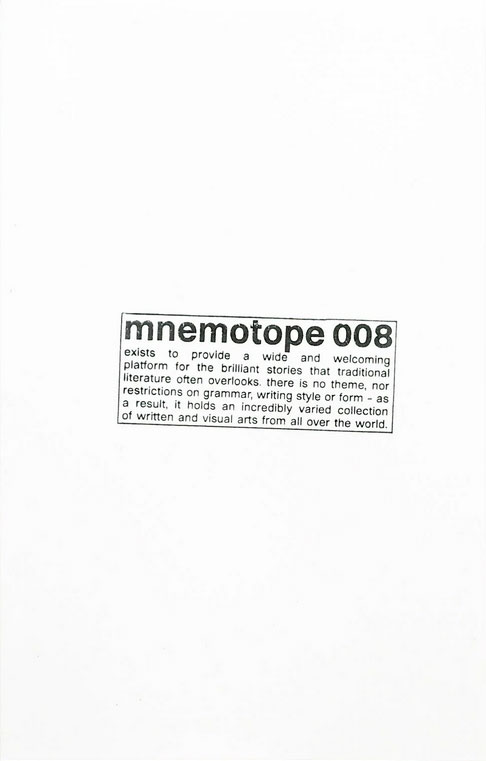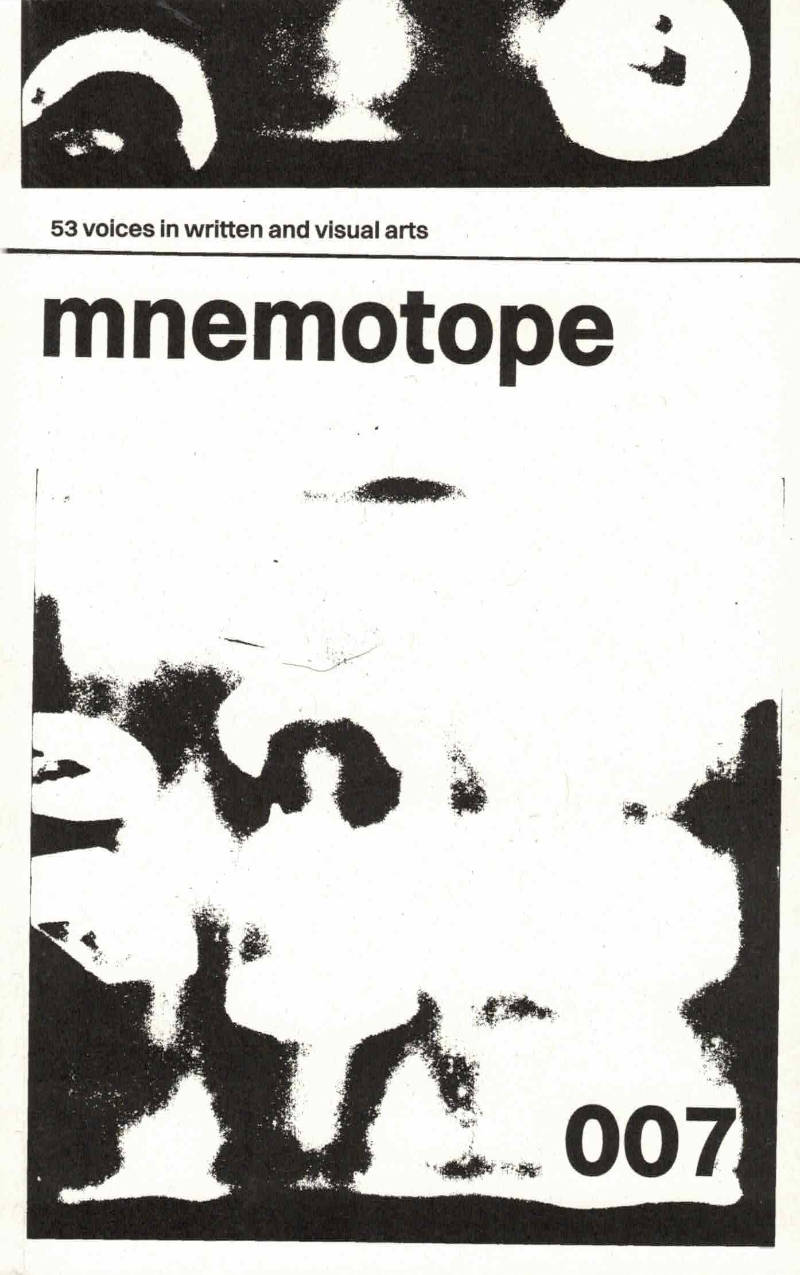
mnemotope issue 001
Mnemotope is a community magazine, published by bog bodies press. Mnemotope magazine takes this as its inspiration-it acts as a place in which lots of stories from across timelines and borders can sit together, and cultural memories can interact. It exists to create and hold the expression and knowledge of its diverse community, because of this, the contents of the magazine are wonderfully varied; some confessional poetry, some hastily notated recipes, some fiction, some history, lots of other things, all submitted during an open call. The format put spreads together of contributions that seem to somehow be in dialogue with one another.
The name of the magazine comes from a term that's used in writings about archaeological finds - it's a little complex when we speak about it abstractly, so take, for example, a bog body. A bog body is an object, but when we look at one it takes on another function as an image. This image is the part beyond the physicality of the object-it's what makes us think about what the world must have been like when this person was walking on it, what they looked like, what they did, who found them, how much the area they were found in must have changed and so on and so on and so on. A mnemotope is something that compresses time, and allows you to be in the bog two thousand years ago and in the museum looking at the body and at home reading about it all at once.
001 contributors:
kostek konopinski, zoé bruhat, pati fixl, franz, lucy hodge-sellers, mathieu kelhetter, nancy martin, åsa yli-luoma, lilou angelrath, camille, mahaut bonnel-emerand, alba ala-pietilä, réiltin o'hagan, joely lorenzen, tom shaw, weronika grec, sarah agerbæk, luca monnerjan, aleksandra fixl, lara, jonas dannacher, lucas garvey, iseult o'hagan, cami, sara blosseville, anwyn howarth, viivi yli luoma, alicja wawryn, kiki astner, boye leborg, melissa-poupouille and anonymous.







